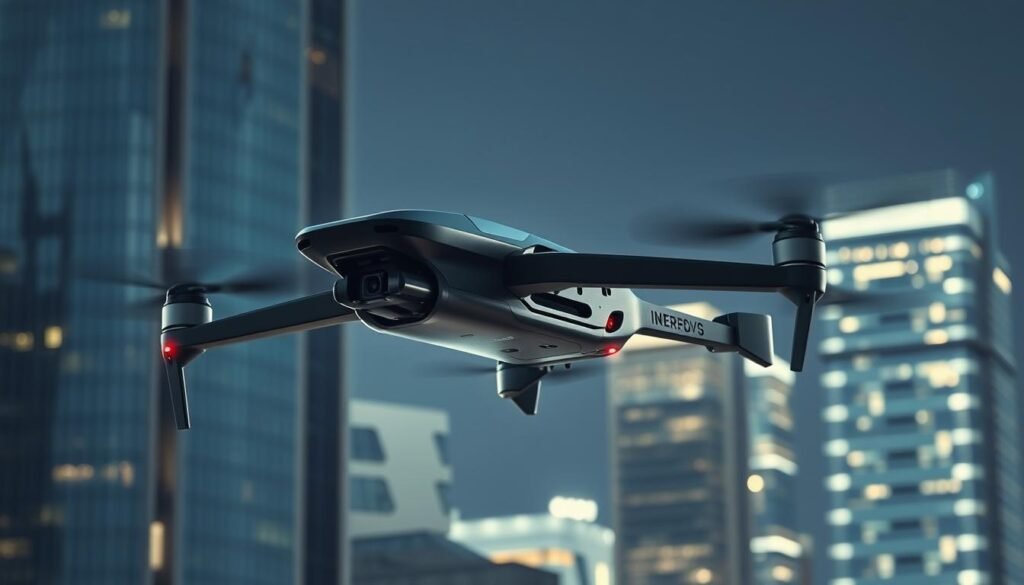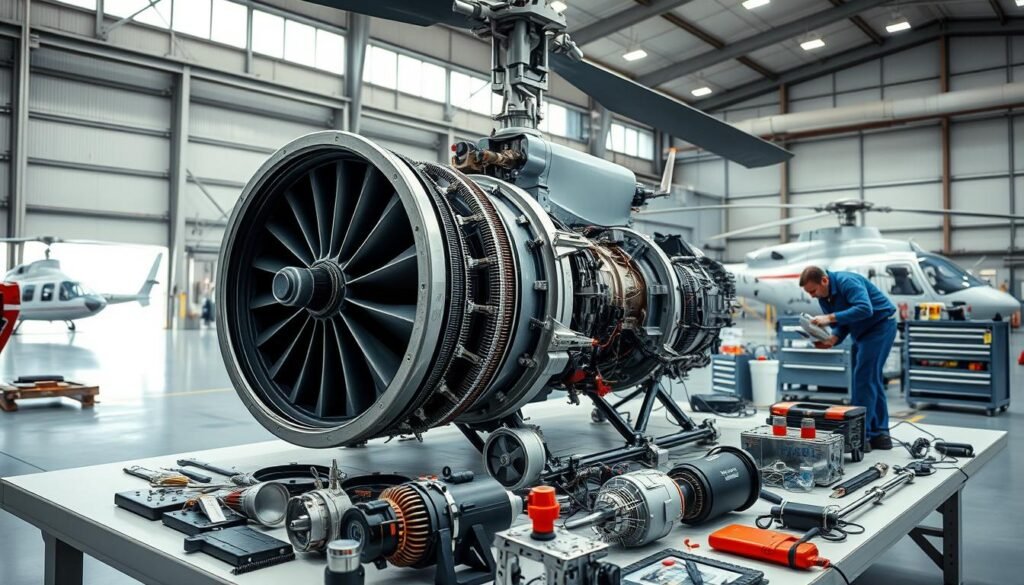Avionics systems are the backbone of modern helicopter operations, providing pilots with critical information related to navigation, communication, flight control, and safety. These systems ensure that helicopters operate efficiently, safely, and in compliance with aviation regulations. However, like any technology, avionics systems require regular maintenance and checks to ensure optimal performance. In this article, we’ll explore the importance of conducting regular avionics checks and how they directly impact the performance and safety of helicopters.
1. What Are Avionics Systems in Helicopters?
Avionics refer to the electronic systems used in helicopters for communication, navigation, and monitoring. These systems include everything from GPS and radar to flight management systems and cockpit displays. They play an integral role in guiding pilots, ensuring safe operation, and enabling communication with ground control and other aircraft.
Key Avionics Systems:
- Navigation Systems: GPS, VOR (VHF Omnidirectional Range), and radar systems guide the helicopter during flight, ensuring accurate route planning and positioning.
- Communication Systems: Radio systems allow pilots to communicate with air traffic control, ground teams, and other aircraft.
- Flight Control Systems: These systems include autopilot functions and control stability to ensure smooth flight.
- Monitoring and Display Systems: Multifunction displays provide pilots with information on fuel levels, engine performance, rotor RPM, and other critical parameters.
2. Enhancing Safety with Regular Avionics Checks
The safety of helicopter operations is closely tied to the reliability of its avionics systems. Regular checks ensure that these systems function as intended, preventing potential malfunctions that could endanger both the helicopter and its occupants.
Prevention of System Failures:
Avionics systems control many of the critical functions that keep helicopters safe in flight. Regular inspections help detect early signs of wear or damage, such as faulty wiring, loose connections, or failing components. Identifying and repairing these issues before they lead to complete system failures ensures the continued safety of the helicopter.
- Early Detection of Faults: By routinely checking avionics systems, technicians can identify potential issues before they escalate, such as malfunctioning communication radios or inaccuracies in navigation data.
Backup Systems Reliability:
In the event of an emergency, helicopters rely on backup avionics systems to maintain control and communication. Ensuring that these systems are regularly tested and in good working order is vital for handling unexpected situations.
- Critical Redundancy: Many avionics systems have redundancies built in to ensure continuous operation even if a primary system fails. Regular checks ensure that these backup systems are functioning and ready to be deployed when needed.
3. Improving Helicopter Performance with Accurate Avionics
The performance of a helicopter is not solely dependent on its engine or aerodynamics—accurate avionics systems are crucial for ensuring optimal flight performance. Without functioning avionics, pilots may struggle to navigate, manage fuel, or operate efficiently.
Accurate Navigation and Route Planning:
One of the primary functions of avionics systems is to provide accurate navigation data, which helps pilots plan and execute flight routes efficiently. Regular checks of GPS, radar, and other navigation systems ensure that the helicopter is flying on the most fuel-efficient routes, avoiding unnecessary detours or delays.
- Fuel Efficiency: By ensuring accurate navigation, avionics checks contribute to more efficient fuel use, reducing operating costs and extending the helicopter’s range.
Optimized Engine and Flight Control Monitoring:
Avionics systems provide real-time data on engine performance, rotor RPM, fuel consumption, and other critical flight parameters. Regular checks of these systems help ensure that the helicopter operates within optimal performance limits, preventing overexertion of the engine or other systems.
- Improved Flight Stability: Monitoring systems that provide data on flight stability, rotor speed, and engine health allow pilots to make real-time adjustments, ensuring smoother and safer flights.
4. Compliance with Aviation Regulations
Helicopters are subject to strict aviation regulations, and avionics systems are no exception. Regulatory authorities, such as the Federal Aviation Administration (FAA), mandate regular avionics inspections to ensure that helicopters meet safety and performance standards. Failing to conduct these checks can result in non-compliance, leading to penalties, grounding of aircraft, or even loss of certifications.
Regulatory Requirements:
- Scheduled Inspections: Aviation authorities typically require helicopters to undergo avionics inspections at regular intervals. These checks ensure that all electronic systems comply with safety standards and function correctly.
- Certification of Avionics Systems: Any changes or updates to avionics systems must be certified by regulatory bodies to ensure they meet safety requirements. Regular checks help ensure that avionics components remain certified and up to date.
Airworthiness Compliance:
Avionics checks are a critical component of ensuring that a helicopter remains airworthy. Without properly functioning avionics, a helicopter may not meet the requirements for safe flight, putting its airworthiness certification at risk.
5. Extending the Lifespan of Avionics Systems
Regular avionics checks help extend the lifespan of these expensive and complex systems. By performing routine maintenance and addressing minor issues early, technicians can prevent more serious malfunctions that may require costly repairs or replacement.
Routine Maintenance for Longevity:
- Component Wear: Over time, avionics components can wear down due to constant use or environmental factors such as heat, humidity, and vibration. Regular inspections help identify signs of wear and tear, allowing technicians to replace components before they fail.
- Software Updates: Many modern avionics systems rely on software to function. Regular avionics checks include updating software to the latest versions, ensuring that the systems remain compatible with other equipment and continue to function efficiently.
Cost Savings:
Preventative maintenance is often more cost-effective than waiting for a system to fail completely. Regular avionics checks reduce the need for major repairs or replacements, saving operators money in the long run.
6. Enhancing Pilot Confidence and Reducing Workload
A well-maintained avionics system helps reduce pilot workload by providing accurate and reliable data, allowing them to focus on flight management rather than troubleshooting technical issues during flight.
Pilot Confidence in Technology:
When pilots know that the avionics systems have been regularly checked and are functioning correctly, they can operate the helicopter with greater confidence. This leads to more efficient decision-making and improved overall performance.
- Reduced Stress in Critical Situations: In challenging flight conditions, such as poor weather or low visibility, pilots rely heavily on avionics systems to provide critical information. Ensuring these systems are functioning correctly reduces the stress on pilots in such scenarios.
7. What Should Be Included in Regular Avionics Checks?
Regular avionics checks should include a comprehensive inspection of all systems, including communication, navigation, monitoring, and control systems. Technicians should focus on both the hardware and software components to ensure all systems are functioning optimally.
Key Areas to Inspect:
- Communication Systems: Inspect radios, transponders, and satellite communication systems to ensure clear and reliable communication with ground control and other aircraft.
- Navigation Systems: Test GPS, radar, and other navigation systems for accuracy and functionality.
- Flight Control Systems: Verify that autopilot and flight management systems are operating correctly and that any backups are functional.
- Software Updates: Ensure that all avionics software is up to date and functioning properly with other helicopter systems.
- Electrical Connections: Check for any loose or damaged wiring and ensure that all connections are secure and insulated to prevent electrical failures.
Conclusion
Regular avionics checks are essential for maintaining helicopter performance, safety, and compliance with aviation regulations. By conducting routine inspections and addressing potential issues early, helicopter operators can ensure that avionics systems continue to function optimally, enhancing both flight performance and safety. Additionally, regular maintenance helps extend the lifespan of avionics components, reducing the need for costly repairs or replacements. Ultimately, keeping avionics systems in top condition is a key factor in the overall success and safety of helicopter operations.
Related Articles
- Understanding Helicopter Vibration Analysis: Key to Preventing Major Failures
- How AI and Big Data Are Shaping the Future of Helicopter Maintenance
- Upgrading Helicopter Systems: When and Why to Modernize Your Aircraft
- The Importance of Regular Avionics Checks for Helicopter Performance
- Helicopter Maintenance in Extreme Weather Conditions: What Technicians Need to Know
More from This Category
- Digital Cockpits: How Modern Technology Is Transforming Helicopter Navigation
- The Role of Predictive Maintenance in Helicopter Fleet Management
- Innovative Materials in Helicopter Design: Enhancing Durability and Efficiency
- How Helicopter Technology Is Revolutionizing Emergency Response Operations
- Rotor Blade Maintenance: Why It’s Critical for Safe Flight
- The Future of Autonomous Helicopters: What Technology Holds for the Aviation Industry
- Helicopter Engine Maintenance: Best Practices for Longevity and Efficiency
- How Advances in Avionics Are Improving Helicopter Safety and Performance
- Routine Helicopter Maintenance Checklist: What Every Pilot Should Know
- The Evolution of Helicopter Technology: From Early Models to Modern Innovations



